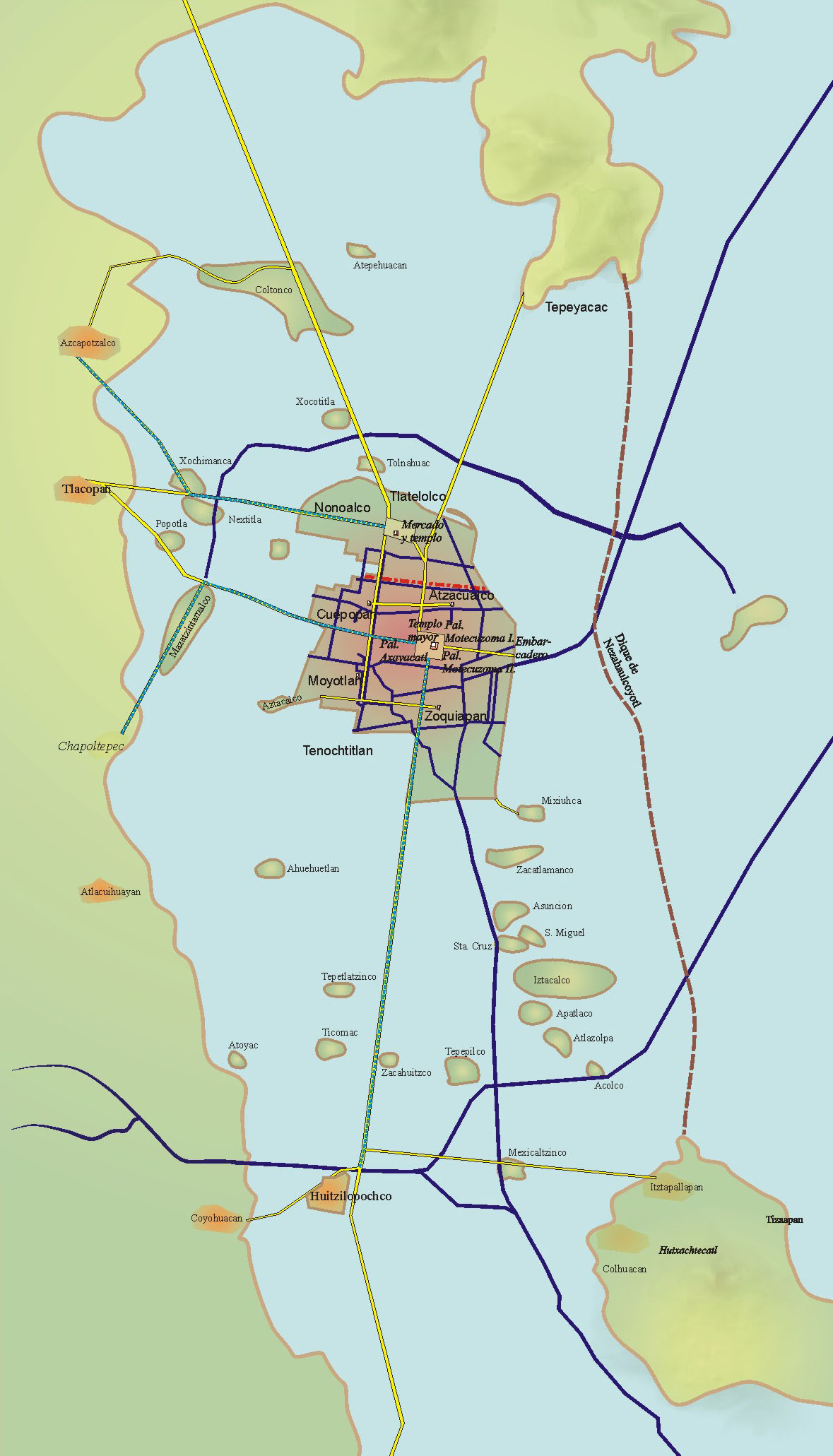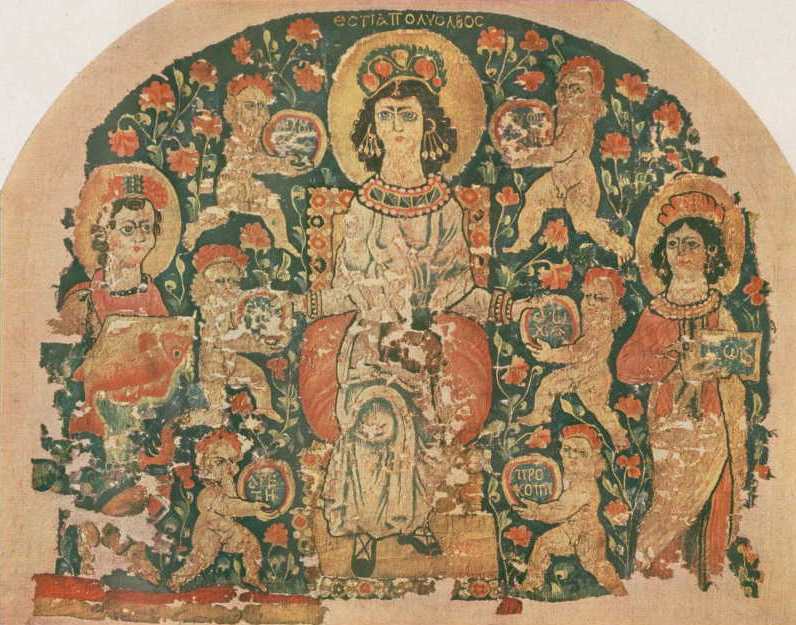|
Cuāuhtlahtoāni
''Cuāuhtlahtoāni'' or ''Cuäuhtlahtoh'' is a titular office of governorship and political administration, used within certain city-states and provinces among the Aztecs of pre-Columbian central Mexico in the Late Postclassic period. The office of ''cuauhtlatoani'' (a Nahuatl word meaning approximately, "the one who speaks like eagle") carried the connotation of "military ruler" or "appointed administrator". During the rise of the Aztec Empire the title was given by the ruling Mexica- Tenochca to the governors they imposed on conquered city-states in central provinces. A Tlatoani ("the one who speaks") was an independent ruler of an Aztec/Mexica polity (altepetl). Cuauhtlatoani were appointed by a Tlatoani to rule conquered areas or areas whose independence was lost such as the city Tlatelolco following the 1473 CE defeat of its last Tlatoani, Moquihuix, by Tenochtitlan. Tlatelolco was governed by Cuauhtlatoque until the death of Itzquauhtzin in 1520 CE. The title is also use ... [...More Info...] [...Related Items...] OR: [Wikipedia] [Google] [Baidu] |
Aztec Civilization
The Aztecs ( ) were a Mesoamerican civilization that flourished in central Mexico in the Post-Classic stage, post-classic period from 1300 to 1521. The Aztec people included different Indigenous peoples of Mexico, ethnic groups of central Mexico, particularly those groups who spoke the Nahuatl, Nahuatl language and who dominated large parts of Mesoamerica from the 14th to the 16th centuries. Aztec culture was organized into city-states (''altepetl''), some of which joined to form alliances, political confederations, or empires. The Aztec Empire was a confederation of three city-states established in 1427: Tenochtitlan, the capital city of the Mexica or Tenochca, Tetzcoco (altepetl), Tetzcoco, and Tlacopan, previously part of the Tepanec empire, whose dominant power was Azcapotzalco (altepetl), Azcapotzalco. Although the term Aztecs is often narrowly restricted to the Mexica of Tenochtitlan, it is also broadly used to refer to Nahuas, Nahua polities or peoples of central Pre ... [...More Info...] [...Related Items...] OR: [Wikipedia] [Google] [Baidu] |
Tenochtitlan
, also known as Mexico-Tenochtitlan, was a large Mexican in what is now the historic center of Mexico City. The exact date of the founding of the city is unclear, but the date 13 March 1325 was chosen in 1925 to celebrate the 600th anniversary of the city. The city was built on an island in what was then Lake Texcoco in the Valley of Mexico. The city was the capital of the expanding Aztec Empire in the 15th century until it was Fall of Tenochtitlan, captured by the Tlaxcaltec and the Spanish in 1521. At its peak, it was the largest city-state, city in the pre-Columbian Americas. It subsequently became a ''Municipalities of Mexico, cabecera'' of the Viceroyalty of New Spain. Today, the ruins of are in the historic center of the Mexican capital. The World Heritage Site of contains what remains of the geography (water, boats, Chinampa, floating gardens) of the Mexica capital. was one of two Mexica (city-states or Polity, polities) on the island, the other being . Etymol ... [...More Info...] [...Related Items...] OR: [Wikipedia] [Google] [Baidu] |
History Of The Aztecs
The Aztecs were a Pre-Columbian Mesoamerican people of central Mexico in the 14th, 15th, and 16th centuries. They called themselves ''Mēxihcah'' (pronounced eˈʃikaʔ. The capital of the Aztec Empire was Tenochtitlan. During the empire, the city was built on a raised island in Lake Texcoco. Modern-day Mexico City was constructed on the ruins of Tenochtitlan. The Spanish colonization of the Americas reached the mainland during the reign of Hueyi Tlatoani Moctezuma II (Montezuma II). In 1521, Hernán Cortés, along with an allied army of other Native Americans, conquered the Aztecs through siege warfare, psychological warfare, direct combat, and the spread of disease. From 1375 until 1428, the Mexica were a tributary of Azcapotzalco. The Aztec rulers Acamapichtli, Huitzilihuitl and Chimalpopoca were, in fact, vassals of Tezozomoc, the Tepanec ruler of Azcapotzalco. When Tezozomoc died in 1421, his son Malazia ascended to the throne of Azcapotzalco. Maxtla (as Mala ... [...More Info...] [...Related Items...] OR: [Wikipedia] [Google] [Baidu] |
Rémi Siméon
Rémi Siméon (1 October 1827 in Lurs, Alpes-de-Haute-Provence department, France – 23 November 1890 in Paris, France) was a French lexicographer. Siméon was the author of a dictionary of the Nahuatl language. In 1886, he was elected as a member of the American Philosophical Society The American Philosophical Society (APS) is an American scholarly organization and learned society founded in 1743 in Philadelphia that promotes knowledge in the humanities and natural sciences through research, professional meetings, publicat .... References {{DEFAULTSORT:Simeon, Remi 1827 births 1890 deaths French male non-fiction writers Linguists of Uto-Aztecan languages Classical Nahuatl International members of the American Philosophical Society 19th-century French lexicographers ... [...More Info...] [...Related Items...] OR: [Wikipedia] [Google] [Baidu] |
Stanford University Press
Stanford University Press (SUP) is the publishing house of Stanford University. It is one of the oldest academic presses in the United States and the first university press to be established on the West Coast. It is currently a member of the Association of University Presses. The press publishes 130 books per year across the humanities, social sciences, and business, and has more than 3,500 titles in print. History David Starr Jordan, the first president of Stanford University, posited four propositions to Leland and Jane Stanford when accepting the post, the last of which stipulated, "That provision be made for the publication of the results of any important research on the part of professors, or advanced students. Such papers may be issued from time to time as 'Memoirs of the Leland Stanford Junior University.'" In 1892, the first work of scholarship to be published under the Stanford name, ''The Tariff Controversy in the United States, 1789-1833'', by Orrin Leslie Elliott, ... [...More Info...] [...Related Items...] OR: [Wikipedia] [Google] [Baidu] |
Dumbarton Oaks Research Library And Collection
Dumbarton Oaks, formally the Dumbarton Oaks Research Library and Collection, is a historic estate in the Georgetown, Washington, D.C., Georgetown neighborhood of Washington, D.C. It was the residence and gardens of wealthy U.S. diplomat Robert Woods Bliss and his wife Mildred Barnes Bliss. The estate was founded by the Bliss couple, who gave the home and gardens to Harvard University in 1940. In 1944, it was the site of the Dumbarton Oaks Conference, which developed plans for the founding of the United Nations following World War II. The part of the landscaped portion of the estate that was designed as an enhanced "natural" area, was given to the National Park Service and is now Dumbarton Oaks Park. The research institute that has emerged from the bequest to Harvard is dedicated to supporting scholarship in the fields of Byzantine studies, Byzantine and Pre-Columbian studies, as well as garden design and landscape architecture through its research fellowships, meetings, exhib ... [...More Info...] [...Related Items...] OR: [Wikipedia] [Google] [Baidu] |
Tozcuecuextli
Tozcuecuextli (1272) was a political figure in the Aztec Empire. Life Tozcuecuextli was born in the surroundings of Xaltocan. His father, Iztacmixcoatzin, is considered the origin of the Nahuatlacas and the Mexica. He was educated within a calpulli (neighborhood) of builders. In 1226, he married Tlaquilxochitzin, princess of Tzompanco, with whom he fathered Huitzilihuitl I, his successor, the following year. Upon the death of Iztacmixcoatzin in 1233 or 1239, Tozcuecuextli took command and shortly after, at the suggestion of Huitziltzin, he emigrated to the Sierra de Guadalupe to exploit the forest and the andesite deposits, near the shore of Lake Texcoco, south of Ecatepec. , across the lagoon in canoes they transport material more efficiently and continually do work for Azcapotzalco Azcapotzalco ( ; ; from ''wikt:azcapotzalli, āzcapōtzalli'' “anthill” + ''wikt:-co, -co'' “place”; literally, “In the place of the anthills”) is a Boroughs of Mexico City, borou ... [...More Info...] [...Related Items...] OR: [Wikipedia] [Google] [Baidu] |
Cuauhtlequetzqui
Cuauhtlequetzqui or Cuauhtliquetzqui is an Aztec name meaning ''rising eagle'' and used by several historical people. The most important of the people with this name was born between 1250 and 1260, his father also was called Cuauhtlequetzqui, a fact that has caused some confusion. In addition, this personage is projected further into the past, making him the first ''cuauhtlahto'' (Mexica leader) "to set out" from Aztlan, Chimalpain places him as ruler from 1116-1153, and even says that he is the same person mentioned from 1280 AD onward. His historical participation is extensively mythologised, his first action is in the war against the Texcaltepeca-Malinalcas in 1281, when, as war-leader, he distinguished himself by capturing Copil, the enemy leader, and taking his daughter, Xicomoyahual, to marry. From this union Cohuatzontli was born. With the failure at Chapoltepec in 1281, the myth came to symbolise the foundation of the site, with the legend becoming the justification ... [...More Info...] [...Related Items...] OR: [Wikipedia] [Google] [Baidu] |
Chimalpahin
Domingo Francisco de San Antón Muñón Chimalpahin Quauhtlehuanitzin (1579, Amecameca, Chalco1660, Mexico City), usually referred to simply as Chimalpahin or Chimalpain, was a Nahua annalist from Chalco. His Nahuatl names () mean "Runs Swiftly with a Shield" and "Rising Eagle", respectively, and he claimed descent from the lords of Tenango- Amecameca-Chalco. He was the grandson of the late Don Domingo Hernández Ayopochtzin, a seventh-generation descendant of the founding king of the polity. Don Domingo was learned and esteemed, especially for his education and his record-keeping skills in the ancient tradition. He wrote on the history of Mexico and other neighboring nations in the Nahuatl and Spanish languages. The most important of his surviving works is the ''Relaciones'' or ''Anales''. This Nahuatl work was compiled in the early seventeenth century, and is based on testimony from indigenous people. It covers the years 1589 through 1615, but also deals with events before th ... [...More Info...] [...Related Items...] OR: [Wikipedia] [Google] [Baidu] |
Nahua Peoples
The Nahuas ( ) are a Uto-Nahuan ethnicity and one of the Indigenous people of Mexico, with Nahua minorities also in El Salvador, Guatemala, Honduras, Nicaragua, and Costa Rica. They comprise the largest Indigenous group in Mexico, as well as the largest population out of any North American Indigenous people group who are native speakers of their respective Indigenous language. Amongst the Nahua, this is Nahuatl. When ranked amongst all Indigenous languages across the Americas, Nahuas list third after speakers of Guaraní and Quechua. The Mexica (Aztecs) are of Nahua ethnicity, as are their historical enemies and allies of the Spaniards: the Tlaxcallans (Tlaxcaltecs). The Toltecs which predated both groups are often thought to have been Nahua as well. However, in the pre-Columbian period Nahuas were subdivided into many groups that did not necessarily share a common identity. Their Nahuan languages, or Nahuatl, consist of many variants, several of which are mutually uninte ... [...More Info...] [...Related Items...] OR: [Wikipedia] [Google] [Baidu] |
Valley Of Mexico
The Valley of Mexico (; ), sometimes also called Basin of Mexico, is a highlands plateau in central Mexico. Surrounded by mountains and volcanoes, the Valley of Mexico was a centre for several pre-Columbian civilizations including Teotihuacan, the Toltec, and the Aztec Empire. The valley used to contain five interconnected lakes called Lake Zumpango, Lake Xaltocan (), Lake Xochimilco, Lake Chalco and the largest, Lake Texcoco, covering about of the valley floor. When the Spaniards arrived in the Valley of Mexico, it had one of the highest population concentrations in the world with about one million people. After the conquest of the Aztec Empire, the Spaniards rebuilt the largest and most dominant city, Mēxihco Tenōchtitlan, renaming it ''Ciudad de México'' (Mexico City) and over time began to drain the lakes' waters to control flooding. The Valley of Mexico is located in the Trans-Mexican Volcanic Belt. The valley contains most of the Mexico City metropolitan area, ... [...More Info...] [...Related Items...] OR: [Wikipedia] [Google] [Baidu] |



